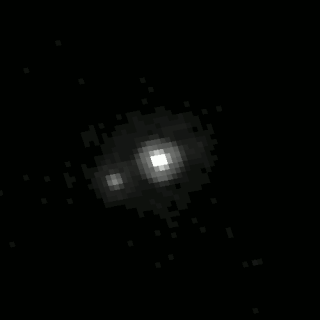List
| Former planet | Discovery | Removal | Current status | Notes | |||
|---|---|---|---|---|---|---|---|
| The Morning Star [NB 1] | Antiquity | Antiquity | Aspects of Venus | | "Phosphorus", the Morning Star of Greek antiquity (Eosphorus, the Dawn-Bringer; called "Lucifer" by the Romans), and "Hesperus", the Evening Star (called "Vesper" by the Romans), were later identified as a single planet, Venus (Aphrodite). | ||
| The Evening Star [NB 1] | Antiquity | Antiquity | | ||||
| Apollo [NB 2] | Antiquity | Antiquity | Aspect of Mercury |  | Like the Morning and Evening Stars, Mercury was deemed to be a distinct planet when it was visible during daytime, and dedicated to Apollo by the Greeks. Eventually, in the 4th century BC, Mercury and Apollo were found to be one and the same. | [4] | |
 | Sun | Antiquity | 1543 | Star |  | In antiquity, it was believed that the Sun and all the planets orbit the Earth. Thus the Sun was categorised as a planet. Following the acceptance of the Copernican model, it was recognized that the planets (including Earth) orbit the Sun, and it was no longer regarded as a planet. Subsequent discoveries show that the Sun is a star. | |
 | Moon | Antiquity | 1543 | Moon of Earth | | Following the acceptance of the Copernican model, planets were defined as objects which orbit the Sun. Since the Moon can be said to orbit the Earth, it was no longer regarded as a planet, but this is debated; see double planet. | |
| Io | 1610 | 1700s | Moons of Jupiter |  | Originally presented as satellite planets orbiting the planet Jupiter. Planetary status later rescinded, leaving them only as satellites. Ganymede is the largest satellite in the Solar System, and is slightly larger than Mercury, but is about half as massive. | ||
| Europa | 1610 | 1700s |  | ||||
| Ganymede | 1610 | 1700s |  | ||||
| Callisto | 1610 | 1700s |  | ||||
| Titan | 1656 | 1700s | Moons of Saturn |  | Originally presented as satellite planets orbiting the planet Saturn. Planetary status later rescinded, leaving them only as satellites. Titan is the second largest satellite in the Solar System, and is slightly larger than Mercury, but less massive. | [12] [6] [7] | |
| Iapetus | 1671 | 1700s | | ||||
| Rhea | 1672 | 1700s |  | ||||
| Tethys | 1684 | 1700s |  | ||||
| Dione | 1684 | 1700s |  | ||||
| Titania | 1787 | 1700s | Moons of Uranus |  | Originally presented as satellite planets orbiting the planet Uranus. [15] Planetary status later rescinded, leaving them only as satellites. | ||
| Oberon | 1787 | 1700s |  | ||||
 | Ceres | 1801 | 1867 | Asteroid and dwarf planet | | The first asteroids to be discovered were accepted as planets in the Copernican system, since they directly orbited the Sun. By 1855 the number of known bodies in the asteroid belt had grown to 15, at which point astronomers started distinguishing these from the eight known major planets. The 1867 edition of Berliner Astronomisches Jahrbuch placed all the new bodies in the asteroid belt into a separate category as 'minor planets' or 'asteroids', by which point almost 100 asteroids had been observed. [16] | |
 | Pallas | 1802 | 1867 | Asteroid |  | ||
 | Juno | 1804 | 1867 | | |||
 | Vesta | 1807 | 1867 | | |||
 | Astraea | 1845 | 1867 | ||||
 | Hebe | 1847 | 1867 |  | |||
 | Iris | 1847 | 1867 |  | |||
 | Chiron | 1977 | 1980 | Centaur |  | The discovery of Chiron was hailed by the press and astrologers as that of a new planet. Astronomically, it was different from any other planets, asteroids and comets known at the time, and it was classified as unique at that time. Later it was called an asteroid, and then was found to exhibit characteristics of a comet, leading to multiple classifications. Later it was placed into its own category of centaurs, and many other centaurs have been discovered subsequently. | |
  | Pluto | 1930 | 2006 | Dwarf planet |  | Following its discovery in 1930, Pluto was widely regarded as the ninth planet. Numerous scientific discoveries cast doubt on this classification, and after the discovery of Eris, which was larger than Pluto, the International Astronomical Union met to determine a definition of planet. Like the asteroids before them, Pluto was grouped together with Eris and similar bodies as members of a group of smaller objects designated as dwarf planets. | |
| Charon | 1978 | 2006 | Moon of Pluto |  | When discovered, Charon, the moon of Pluto, was found to be very large, leading to the declaration by many that the Pluto-Charon system was a double planet (binary planet). The 2006 IAU redefinition of planet excludes the possibility of double planets. | ||
| 15760 Albion | 1992 | unknown | Trans-Neptunian object |  | When discovered, these bodies were briefly hailed as the tenth and eleventh planets by the press, but it was then decided that 15760 Albion was the prototype of trans-Neptunian objects or cubewanos. | [27] [28] | |
| (181708) 1993 FW | 1992 | unknown | [28] | ||||
 | Eris | 2005 | 2006 | Dwarf planet |  | The discovery of Eris, hailed worldwide by the press as the tenth planet, prompted the International Astronomical Union to meet and establish a new definition of planet. It was recategorised as a dwarf planet, together with Pluto and numerous other objects. | |














